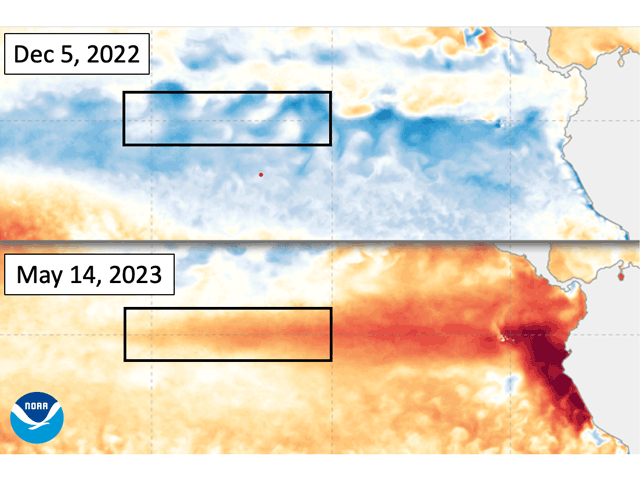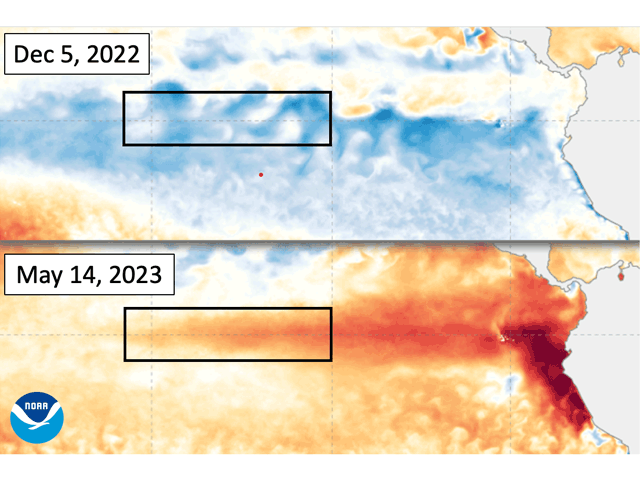Ag Weather Forum
El Nino Cost Study Points to 'Have' and 'Have Not' World Regions
As El Nino intensifies in the central Pacific Ocean, a new study of the costs of El Nino-related weather damage by a team of Dartmouth College climate scientists finds that El Nino is much costlier to the global economy with longer-lasting impact than previously thought. The study has provoked some lively discussion about who gets hit the hardest from the impact of El Nino along with a look at some sharp differences around the world when it comes to which regions suffer the most damage.
El Nino is a temporary and natural warming of parts of the equatorial Pacific, that causes droughts, floods and heat waves in different parts of the world. It also adds an extra boost to the warming trend of the globe.
Regionally, research shows that El Nino reduces hurricane activity in the Atlantic Ocean basin. El Nino also makes it wetter across much of the U.S. South and West, Peru, Uruguay and Argentina, some of Southeast Asia, and a bit of east central Africa. El Nino also makes the weather drier in southeast Africa, southern Asia, northern Australia and the Amazon and often leads to increased wildfires in those areas. It's warmer in much of Asia, the American Pacific Northwest and Australia.
P[L1] D[0x0] M[300x250] OOP[F] ADUNIT[] T[]
The Dartmouth study concludes that the average El Nino costs the global economy about $3.4 trillion, and that the strong El Nino in 1997-98 cost $5.7 trillion. Those estimates are far higher than official agency estimates.
In a summary of the study, Associated Press notes that the World Bank estimated the 1997-1998 El Nino cost governments $45 billion -- more than 100 times smaller than the Dartmouth estimate.
A notable feature of the Dartmouth study is a focus on economic "scars" that the world economy suffers because of El Nino impact versus how the world economy would fare without El Nino. The economic scars are defined as the diversion of spending away from technology and innovation toward recovery and rebuilding efforts. The term refers to opportunities lost while recovering from El Nino effects.
The Dartmouth study looked only at the total world economy related to El Nino. Another economic research project done at Cambridge University following the 2016-17 El Nino found some sharp disparities. That study of 21 national economies, mostly developed, during past El Ninos found in the United States and Europe an El Nino "has a growth-enhancing effect" while it harmed Australia, Chile, Indonesia, India, Japan, New Zealand and South Africa. Almost all the nations cited as harmed by El Nino are in the Southern Hemisphere.
The key details of the Dartmouth study were summarized by AP science writer Seth Borenstein. Details of the Dartmouth study were published in the journal Science on May 18. The Cambridge University study summary was published in the Journal of International Economics.
DTN ag meteorologist John Baranick's post on the details of this developing El Nino can be seen at: "El Nino is Almost Here -- How Strong Will It Get?" https://www.dtnpf.com/…
Bryce Anderson can be reached at Bryce.Anderson@dtn.com
Follow him on Twitter @BAndersonDTN
(c) Copyright 2023 DTN, LLC. All rights reserved.






Comments
To comment, please Log In or Join our Community .